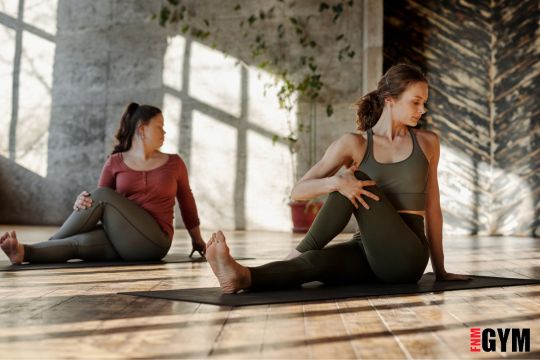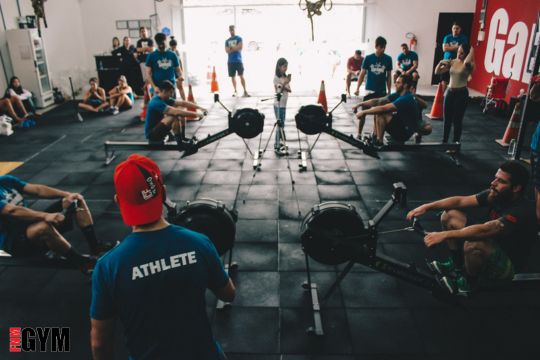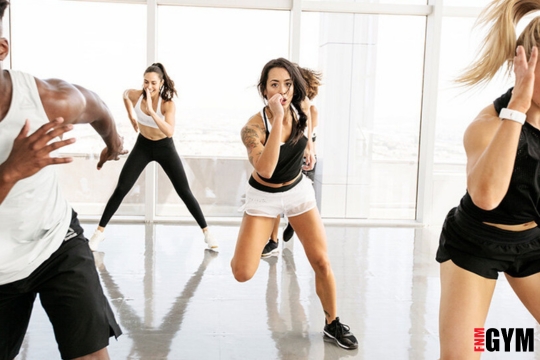As a community-driven, inclusive, family-owned gym, we are committed to your health and well-being. Today, we’re diving into a topic that’s vital for everyone, regardless of your fitness level or goals: the importance of flexibility and stretching.
Why Flexibility Matters
Flexibility is often overlooked in favor of strength and endurance training; however, it’s a crucial component of overall fitness. Specifically, it refers to the ability of your muscles and joints to move through their full range of motion. Moreover, improved flexibility not only enhances performance in physical activities but also decreases your risk of injuries. Additionally, it promotes better posture and balance, contributing to a more well-rounded fitness routine.
Imagine trying to touch your toes but feeling tightness in your hamstrings and lower back; that discomfort is a sign of limited flexibility. Conversely, when your muscles and joints are flexible, everyday tasks become easier. For example, activities such as bending to pick something up or reaching for an item on a high shelf become more manageable. Consequently, improved flexibility not only enhances your daily movements but also contributes to overall comfort and ease.
Benefits of Regular Stretching
Regular stretching has numerous benefits that go beyond simply improving flexibility. Here are some of the top reasons to make stretching a daily habit:
- Enhanced Performance: Flexible muscles improve your athletic performance by allowing you to move more efficiently.
- Reduced Risk of Injury: Stretching helps prepare your muscles for physical activity, reducing the likelihood of strains and sprains.
- Improved Posture: Stretching strengthens muscles that support proper alignment, helping to prevent slouching and back pain.
- Increased Blood Flow: Stretching promotes better circulation, which helps deliver oxygen and nutrients to your muscles.
- Stress Relief: Taking time to stretch can be a relaxing activity that helps reduce mental and physical stress.
Types of Stretching: Static vs. Dynamic
When it comes to stretching, there are two primary types: static and dynamic. Each type has its own benefits and is best suited for different situations.
Static Stretching
Static stretching involves holding a stretch for a prolonged period, usually between 15 to 60 seconds. This type of stretching is best done after your workout, as it helps cool down your muscles and improve flexibility.
Some examples of static stretches include:
- Hamstring Stretch: Sit on the floor with one leg extended and reach for your toes.
- Quad Stretch: Stand on one leg, bend the other knee, and pull your heel toward your buttocks.
- Shoulder Stretch: Extend one arm across your body and use the opposite arm to hold it in place.
Dynamic Stretching
Dynamic stretching involves moving parts of your body through their full range of motion, often mimicking the movements you’ll perform during your workout. Furthermore, this type of stretching is ideal for warming up, as it helps increase blood flow and muscle temperature. Consequently, it prepares your body for the physical demands of your exercise routine and can enhance overall performance.
Some examples of dynamic stretches include:
- Leg Swings: Swing one leg forward and backward, then side to side.
- Arm Circles: Extend your arms and make circular motions.
- Lunges with a Twist: Step forward into a lunge and twist your torso toward the forward leg.
Stretching Routines for Different Fitness Levels
At FNM, we believe in catering to all fitness levels. Here are some stretching routines suitable for beginners, intermediate, and advanced exercisers.
Beginner Stretching Routine
- Neck Stretch: Gently tilt your head toward each shoulder, holding for 10 seconds.
- Cat-Cow Stretch: On all fours, alternate between arching and rounding your back.
- Seated Forward Bend: Sit with legs extended and reach for your toes.
Intermediate Stretching Routine
- Standing Quad Stretch: Stand on one leg, pulling the other foot toward your buttocks.
- Lateral Lunge: Step to the side, bending one knee while keeping the other leg straight.
- Pigeon Pose: From a plank position, bring one knee forward and lower your hips.
Advanced Stretching Routine
- Dynamic Lunge: Step forward into a lunge, then step back and switch legs.
- Bound Angle Pose: Sit with the soles of your feet together, pressing your knees toward the floor.
- Standing Forward Bend with Shoulder Opener: Interlace your fingers behind your back and fold forward.
Tips for Incorporating Flexibility and Stretching into Your Daily Routine
Making stretching a part of your daily routine doesn’t have to be a chore. Here are some tips to help you integrate it seamlessly:
- Set a Schedule: Dedicate specific times for stretching, such as after waking up or before bed.
- Incorporate Stretching into Workouts: Add dynamic stretches to your warm-up and static stretches to your cool-down.
- Use Technology: Set reminders on your phone or use a fitness app to track your stretching routine.
- Make it Social: Stretch with a friend or join a group class at FNM for added motivation.
At Fitness n Motion Health Centre, we believe that flexibility and stretching are essential components of a healthy lifestyle. Whether you’re a seasoned athlete or just starting your fitness journey, incorporating regular stretching can make a world of difference in how you feel and perform. So, stretch those muscles, improve your flexibility, and enjoy the countless benefits of a more flexible you!
Click here to learn more about the benefits of Great Posture.



